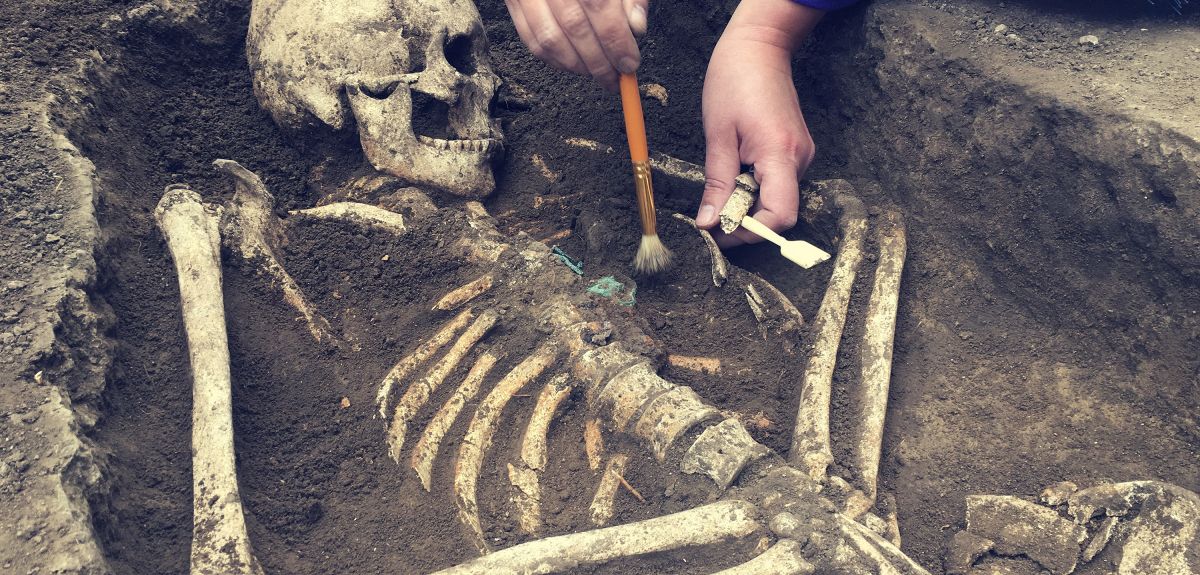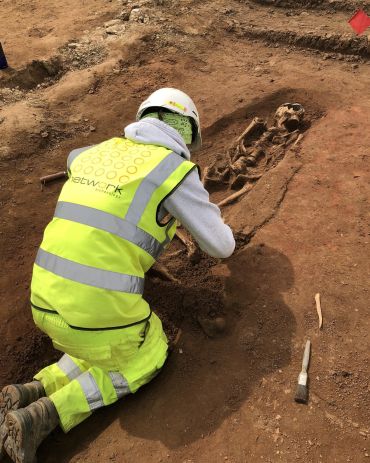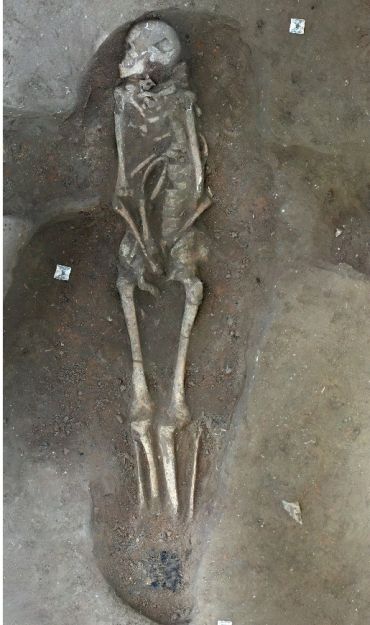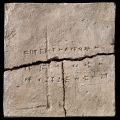
New technique identifies earliest cases of genetic disorders from ancient DNA
University of Oxford researchers have contributed to a study which used ancient DNA to identify the earliest known people to have suffered from various genetic disorders affecting the number of sex chromosomes. The findings have been published today in Communications Biology.
 Excavating a skeleton from a site in Lincoln. Image credit: Network Archaeology.
Excavating a skeleton from a site in Lincoln. Image credit: Network Archaeology.‘Aneuploidy’ occurs when a person’s cells have an extra or missing chromosome. If this occurs in the sex chromosomes, this can cause differences such as delayed development or changes in height around puberty.
Led by the Francis Crick Institute, the research team developed a new technique to measure the number of chromosomes in ancient genomes more precisely. In this way, they identified:
- The first prehistoric person with mosaic Turner syndrome (where one of the X chromosomes in a female is missing or partially missing), who lived about 2500 years ago;
- The earliest known person with Jacob’s syndrome (where a male has an extra Y chromosome, XYY) in the Early Medieval Period;
- Three people with Klinefelter syndrome (where a male has an extra X chromosome, XXY) across a range of time periods;
- An infant with Down’s Syndrome (where a person has three copies of chromosome 21 instead of two) from the Iron Age.
To overcome this, the team developed a computational method which counts the number of copies of X and Y chromosomes and compares the outcome to a predicted baseline (what one would expect to see).
The team used the new method to analyse ancient DNA from a large dataset of individuals collected as part of the Thousand Ancient British Genomes project across British history, identifying six individuals with aneuploidies across five sites in Somerset, Yorkshire, Oxford, and Lincoln. The individuals lived across a range of time periods, from the Iron Age (2500 years ago) up to the Post-Medieval Period (about 250 years ago).
They identified five people who had sex chromosomes which fell outside of the XX or XY categories. All were buried according to their society’s customs although no possessions were found with them to shed more light on their lives.
 A skeleton with Jacob's syndrome. Image credit: Network Archaeology.
A skeleton with Jacob's syndrome. Image credit: Network Archaeology.By investigating details on the bones, the research team could see that it was unlikely that the individual with Turner syndrome had gone through puberty and started menstruation, despite their estimated age of 18-22. Their syndrome was shown to be mosaic: some cells had one copy of chromosome X and some had two.
Co-author of the study Rick Schulting, Professor of Scientific and Prehistoric Archaeology at the University of Oxford, said: ‘The results of this study open up exciting new possibilities for the study of sex in the past, moving beyond binary categories in a way that would be impossible without the advances being made in ancient DNA analysis.’
The study ‘Detection of chromosomal aneuploidy in ancient genomes’ has been published in Communications Biology.
The study was led by the Francis Crick Institute and involved archaeologists from the University of Oxford, the Wells and Mendip Museum, University of York, University of Bradford, Oxford Archaeology, York Osteoarchaeology, and Network Archaeology. It was supported by Lincolnshire County Council, Magdalen College, and Balfour Beatty for National Highways.
 Expert Comment: Chatbot-driven sexual abuse? The Grok case is just the tip of the iceberg
Expert Comment: Chatbot-driven sexual abuse? The Grok case is just the tip of the iceberg
 New study finds that stopping weight-loss drugs is linked to faster regain than ending diet programmes
New study finds that stopping weight-loss drugs is linked to faster regain than ending diet programmes
 Ancient DNA reveals how a chicken virus evolved to become more deadly
Ancient DNA reveals how a chicken virus evolved to become more deadly
 Researchers extract ancient DNA from a 2,900-year-old clay brick, revealing a time capsule of plant life
Researchers extract ancient DNA from a 2,900-year-old clay brick, revealing a time capsule of plant life